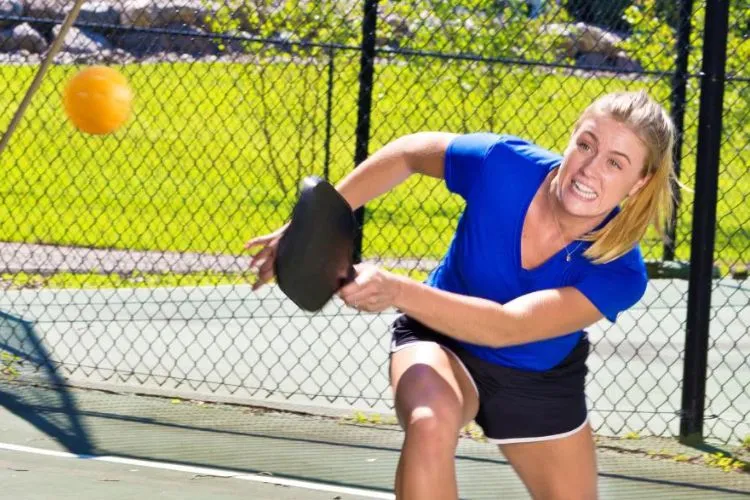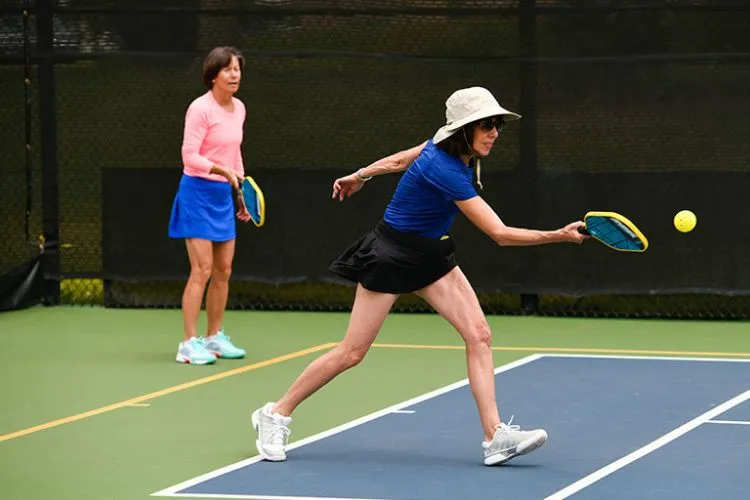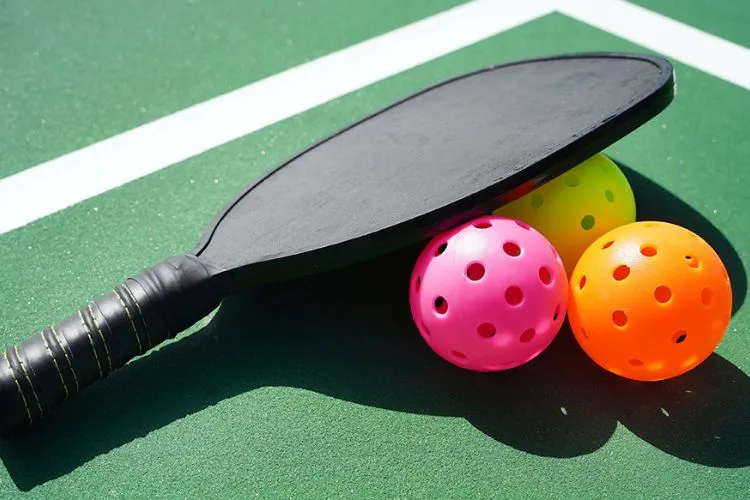Pickleball, a sport born from the fusion of badminton, tennis, and table tennis, enjoys immense popularity thanks to its invigorating mix of strategy and physical play.
Yet, many beginners and even advanced players struggle with a common issue: the ball popping up—an easy target for opponents. So, how to stop popping the ball up in pickleball?
By keeping the ball low, players can retain control of the game and reduce scoring opportunities for the opposition.
This article aims to provide practical insight into why the ball pops up and offers crucial advice to help you enhance your game.

How To Stop Popping The Ball Up In Pickleball?
To stop popping the ball up in pickleball, you need to work on several aspects of your game.
Firstly, pay attention to your paddle angle. Ensuring your paddle is more horizontal at the point of contact can help to avoid pushing the ball up in the air. Secondly, maintain a firm but relaxed grip.
Overgripping can lead to excess tension and decreased control, thus sending the ball upwards. Instead, hold your paddle like you’re shaking hands – firm enough to not slip away, flexible enough for wrist movement.
Your stance and positioning also matter. Adopt the ‘ready position’ – feet shoulder-width apart, knees slightly bent, and body slightly forward. Being in this proactive state enables swift movements in all directions and helps with shot control.
Be mindful of shot selection, too. Controlled, soft shots help keep the ball down while applying pressure onto your opponent.
Sure, power shots may be exciting, but they often end up with the ball going up, exposing you to attacks. Lastly, employ noticeable follow-through in your swings. A short, rushed stroke could cause pop-ups.
Incorporate these strategies with regular practice, and over time, you’ll see a reduction in ball pop-ups during your games.
Understanding Why the Ball Pops Up
In pickleball, maintaining control of the ball is pivotal. Several factors can lead to the ball popping up, inadvertently giving opponents an advantage.
The angle of your pickleball paddle at the moment of impact directly affects the trajectory of the ball. If the paddle face is open, the ball tends to rise, inviting a slam from the opponent.

Hold and grip of the paddle can also contribute. A loose grip might wobble upon contact, sending the ball in unexpected directions, usually upwards.
Finally, body movement plays a significant role too. A rushed or incomplete swing might cause a pop-up, leaving you exposed to the opponent’s attack.
Essential Techniques to Prevent the Ball from Popping Up
Mastering a few key techniques can significantly improve your game and keep the ball low. These techniques span stance, grip, and shot execution.
Proper Stance and Positioning
A stable and balanced stance provides a solid base for any shot in pickleball. Align your feet shoulder-width apart for optimal balance, and keep your knees slightly bent. This proactive posture, also known as the “ready position,” allows for quick, effective movements in any direction.
Your foot positioning also influences your shots. Lead with your non-paddling foot when moving towards the ball. This positioning enhances your control, subsequently reducing the likelihood of popping the ball up.
Grip and Paddle Control
The way you hold your paddle influences your shot control. A firm but relaxed grip provides maximum stability. It’s advisable to hold the paddle as though you’re shaking someone’s hand—a grip strong enough to hold the paddle, yet flexible enough to make necessary wrist movements.
Moreover, an understanding of the correct paddle angle is crucial in maintaining a low ball trajectory. Keeping the paddle face slightly closed during contact keeps the ball low, making it harder for the opponent to attack.
Shot Selection and Execution
A great pickleball player knows when to use soft shots over power shots and vice versa. Subtle, controlled shots, especially during dinks, can prevent the ball from popping up while putting the opponent on the defensive.
Properly executed shots, measured in swing speed and follow-through, are crucial to keep the ball low. A rushed swing often results in a pop-up. Following through helps adjust the ball’s trajectory and sustain ball control.
Practice Drills and Exercises
Improvements in pickleball, like any sport, demand practice. Regular drill sessions focusing on hand-eye coordination and shot precision can prevent the ball from popping up. Experiment with different paddle angles and grip strengths.
Real game simulations can help bring atmospheric pressure and reinforce the lessons learned during drills.
Play Smart: Strategies for Game Improvement
Being observant develops your pickleball acumen. Understanding your opponents’ preferences and weaknesses helps adjust your game accordingly. It’s effective to strategize based on observations, changing your shots and stances to keep your game unpredictable.
Additional Tips from Pros
Knowledgeable pickleball players often stress the importance of patience during gameplay. Rushed swings are usually inaccurate.

Give yourself the time to prepare for the shot. Patience, combined with strategic planning and precise execution, considerably enhances your game performance.
You may also find useful: How to Beat a Poacher in Pickleball? | How to Beat a Pickleball Banger?
Frequently Asked Questions (FAQs)
Why do I keep popping the ball up in pickleball?
It’s usually due to an incorrect paddle angle, improper grip, or hurried swing. A poor stance can also cause the ball to pop up. Adjusting these aspects of your game can reduce pop ups.
How can adjusting my paddle angle help keep the ball low?
A slightly closed paddle face helps keep the ball low. An open paddle face usually results in a high ball trajectory, which is easy for opponents to attack.
What are some effective drills to reduce pop ups in my game?
Drills focusing on hand-eye coordination, paddle control, and shot precision can help. Practice different grips, paddle angles while also improving footwork during these drills.
Conclusion:
Improving in pickleball demands dedication and practice. Understand why the ball pops up and master these techniques: proper stance, paddle control, and mindful shot selection.
With time, the problem of popping the ball up will become less frequent, making you a formidable contender on the court.

Pickleball’s more than a game to me—it’s a passion. I write, sharing its highs and lows, the thrills and the lessons. Some tales might draw you to the court, while others give a hint of the game’s magic. So, curious about my journey? Ready to dive deep into the world of pickleball with me? Let’s go.
